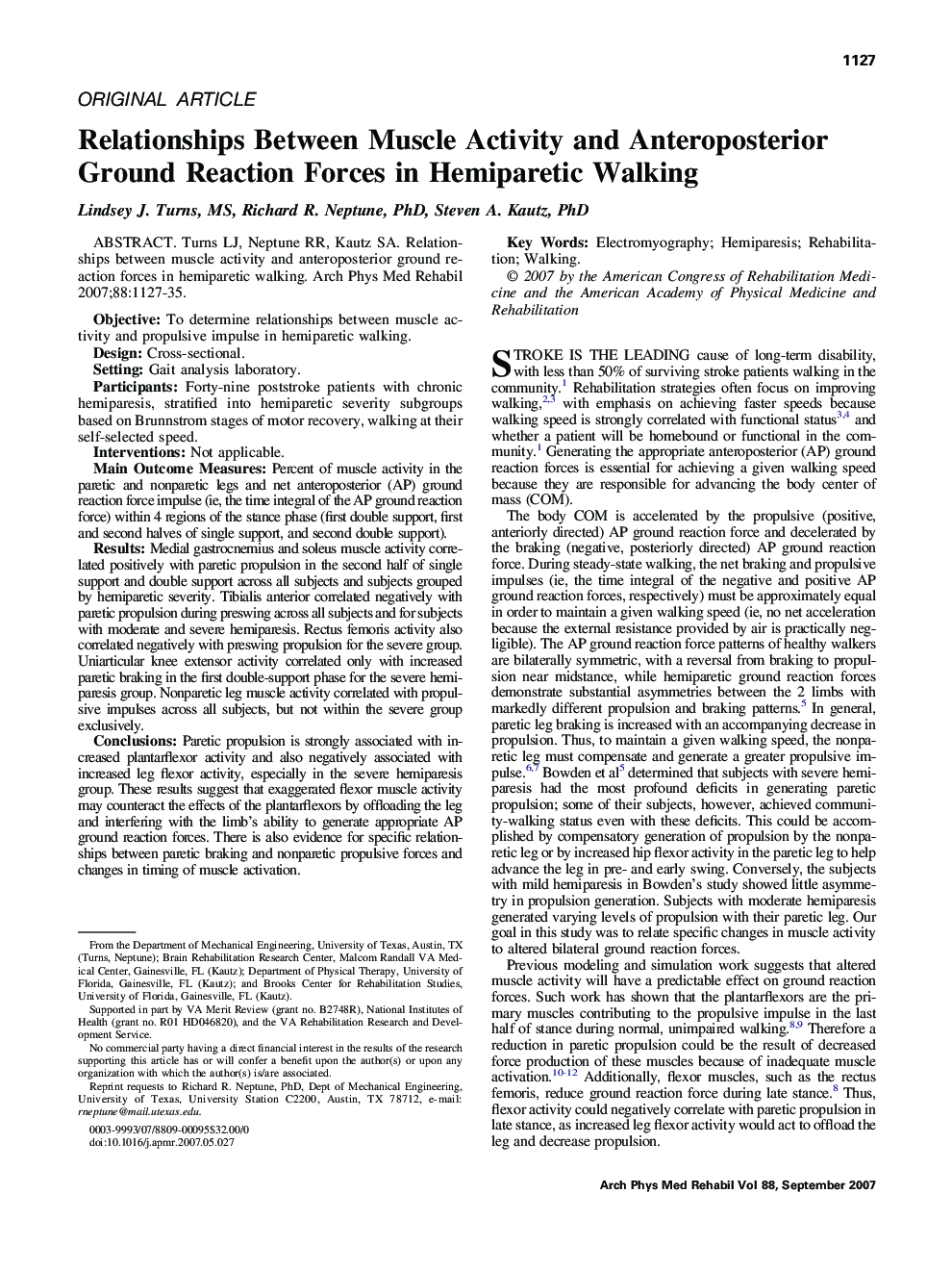| کد مقاله | کد نشریه | سال انتشار | مقاله انگلیسی | نسخه تمام متن |
|---|---|---|---|---|
| 3452768 | 1595789 | 2007 | 9 صفحه PDF | دانلود رایگان |

Turns LJ, Neptune RR, Kautz SA. Relationships between muscle activity and anteroposterior ground reaction forces in hemiparetic walking.ObjectiveTo determine relationships between muscle activity and propulsive impulse in hemiparetic walking.DesignCross-sectional.SettingGait analysis laboratory.ParticipantsForty-nine poststroke patients with chronic hemiparesis, stratified into hemiparetic severity subgroups based on Brunnstrom stages of motor recovery, walking at their self-selected speed.InterventionsNot applicable.Main Outcome MeasuresPercent of muscle activity in the paretic and nonparetic legs and net anteroposterior (AP) ground reaction force impulse (ie, the time integral of the AP ground reaction force) within 4 regions of the stance phase (first double support, first and second halves of single support, and second double support).ResultsMedial gastrocnemius and soleus muscle activity correlated positively with paretic propulsion in the second half of single support and double support across all subjects and subjects grouped by hemiparetic severity. Tibialis anterior correlated negatively with paretic propulsion during preswing across all subjects and for subjects with moderate and severe hemiparesis. Rectus femoris activity also correlated negatively with preswing propulsion for the severe group. Uniarticular knee extensor activity correlated only with increased paretic braking in the first double-support phase for the severe hemiparesis group. Nonparetic leg muscle activity correlated with propulsive impulses across all subjects, but not within the severe group exclusively.ConclusionsParetic propulsion is strongly associated with increased plantarflexor activity and also negatively associated with increased leg flexor activity, especially in the severe hemiparesis group. These results suggest that exaggerated flexor muscle activity may counteract the effects of the plantarflexors by offloading the leg and interfering with the limb’s ability to generate appropriate AP ground reaction forces. There is also evidence for specific relationships between paretic braking and nonparetic propulsive forces and changes in timing of muscle activation.
Journal: Archives of Physical Medicine and Rehabilitation - Volume 88, Issue 9, September 2007, Pages 1127–1135